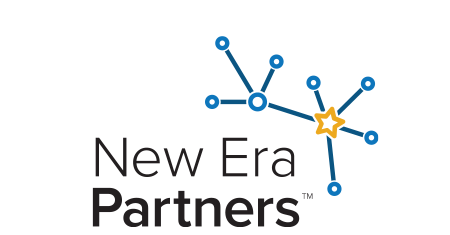A rule by any other name…
FSMA 204, Rule 204, BT Act of 2002, Proposed FDA Traceability Rule, the Final Rule, Subpart S, Subpart J, FSMA Final Rule on Requirements for Additional Traceability Records for Certain Foods – seems like we need a traceability system for the names of the traceability rules.
These many names refer to just two FDA traceability rules, officially named:
- Establishment and Maintenance of Records Under the Public Health Security and Bioterrorism Preparedness and Response Act of 2002 (also called Subpart J or BT Act)
- Requirements for Additional Traceability Records for Certain Foods (also called Food Traceability Final Rule or FSMA 204)
Why are there so many different names for these regulations and how do we make sense of them all? It’s helpful to look at a brief history of the rules and the federal rulemaking process itself.
Understanding the Federal Rulemaking Process
The reason for all the names is rooted in the rulemaking process1 which includes three types of documents: laws (U.S. Code), rules (Federal Register), and the codification of rules (Code of Federal Regulations). Each document has an official long name, some have official short names, and most have a variety of informal nicknames.
Federal agencies are created by and get their authority to issue regulations from laws (statutes) enacted by Congress. Agencies must follow an open public process when they issue regulations:
- Rulemaking begins when an agency determines that the rulemaking process is warranted, or when directed by an act of Congress. Agencies publish notifications related to rulemaking in the Federal Register.
- A 30-to-180-day comment period follows the publication of a proposed rule. Based on comments received, agencies may change aspects of the rule prior to publishing the final rule.
- Final rules have preambles that include the summary of the societal problems and regulatory goals and explain why the rule is necessary, the effective date, regulatory authority for issuing the rule, and supplementary information.
The final rule text also sets out amendments to the Code of Federal Regulations (CFR). The CFR is the official legal print publication containing the codification of the general and permanent rules published in the Federal Register by the departments and agencies of the Federal Government. The Electronic Code of Federal Regulations (eCFR) is a continuously updated online version of the CFR. It is not an official legal edition of the CFR.
Bioterrorism Act of 2002 and One-Up, One-Back Traceability
In response to the tragic events of September 11, 2001, Congress signed into law the Public Health Security and Bioterrorism Preparedness and Response Act of 20022, also known as the Bioterrorism Act, the BT Act of 2002, or just the BT Act.
Title III, Subtitle A, Section 306 of the Bioterrorism Act added a requirement for the “Maintenance and inspection of records for foods.” This section requires that persons (excluding farms and restaurants) who manufacture, process, pack, transport, distribute, receive, hold, or import food must maintain records that will allow the FDA to identify the immediate previous sources and immediate subsequent recipients of food, including the food’s packaging, to address credible threats of serious adverse health consequences or death to humans or animals (also known as SAHCODHA events, pronounced “sacoda”). The FDA was also given the authority to create requirements for establishing those records.
In 2004, FDA finalized a rule, Establishment and Maintenance of Records Under the Public Health Security and Bioterrorism Preparedness and Response Act of 2002, based on the authority granted to it by Congress through the Bioterrorism Act of 2002. Following the publication of the rule in the Federal Register, the rule was codified in Subpart J of part 1 of title 21 of Code of Federal Regulations.
So, to review, the first FDA traceability rule3 was nicknamed after the law which directed FDA to create the rule, the BT Act of 2002. The resulting regulation is referred to as Subpart J and is published in the Code of Federal Regulations.4 To add another wrinkle, the industry often refers to this rule and broadly this type of traceability as one-up, one-back.
Food Safety Modernization Act
In 2004, FDA was aware that the industry was, “moving in the direction of being able to track the lot or code number or other identifier throughout the entire food chain, but that the current technology has not made such tracking cost efficient.” For this reason, Subpart J only requires that persons who manufacture, process, and pack food record lot/code numbers or other identifiers to the extent the information exists (see Comment 108 on Subpart J5).
Between 2006 and 2008, a flurry of foodborne illness outbreaks linked to spinach, tomatoes, peppers, peanut butter, ground beef, canned chili, frozen pizza, and cantaloupes shone a spotlight on FDA’s inability to quickly trace foods through the supply chain, despite the recently implemented BT Act.
During a hearing held on June 12, 2008, entitled, “American lives still at risk: when will FDA’s Food Protection Plan be fully funded and implemented?”6 traceability (or lack thereof) was front and center. Dr. Acheson, the FDA Food Safety Czar, was grilled about FDA’s awareness of, and interest in, modern electronic traceability systems to help solve the problem. This hearing and others led to the development and passage of the Food Safety Modernization Act (FSMA) in late 2010, including section 204, Enhancing tracking and tracing of food and recordkeeping. Thus, the term FSMA 204 was born.
FSMA 204
Section 204 of FSMA requires FDA to establish recordkeeping requirements for facilities that manufacture, process, pack, or hold foods the Agency designates as high risk to facilitate the rapid and effective traceability of such foods. These recordkeeping requirements are in addition to the BT Act of 2002.
The resulting final rule, Requirements for Additional Traceability Records for Certain Foods,7 was published in the Federal Register on November 21, 2022. The FDA web page8 dedicated to the rule refers to the rule as, “FDA final rule on Requirements for Additional Traceability Records for Certain Foods (Food Traceability Final Rule).” In early 2023, FDA published the codified version of the rule to Subpart S in the Code of Federal Regulations.9
FDA’s second traceability rule was initially named after the law and section, FSMA 204. More recently, the rule’s name has been expanded to include FDA’s nomenclature, including the Food Traceability Final Rule, and Subpart S. To be comprehensive, some combine the names and refer to the rule as the FDA FSMA 204 Final Food Traceability Rule, while others just call it, The Rule or 204.
I hope that this helps explain why two rules have so many names. Regardless of what you call them, remember that both rules still apply depending on the type of food.
Get Personalized Guidance on Complying with These Traceability Rules
Complying with these regulations is a complex process, especially for enterprise operations. If you’re in need of guidance and strategic planning, please reach out to New Era Partners for a briefing on the rules or for assistance in planning your traceability program.
References:
- https://www.federalregister.gov/uploads/2011/01/the_rulemaking_process.pdf
- https://www.govinfo.gov/link/plaw/107/public/188
- https://www.federalregister.gov/documents/2004/12/09/04-26929/establishment-and-maintenance-of-records-under-the-public-health-security-and-bioterrorism
- https://www.ecfr.gov/current/title-21/chapter-I/subchapter-A/part-1#subpart-J
- https://www.federalregister.gov/d/04-26929/p-469
- https://www.govinfo.gov/content/pkg/CHRG-110hhrg56233/pdf/CHRG-110hhrg56233.pdf
- https://www.federalregister.gov/documents/2022/11/21/2022-24417/requirements-for-additional-traceability-records-for-certain-foods
- https://www.fda.gov/food/food-safety-modernization-act-fsma/fsma-final-rule-requirements-additional-traceability-records-certain-foods
- https://www.ecfr.gov/current/title-21/chapter-I/subchapter-A/part-1/subpart-S


